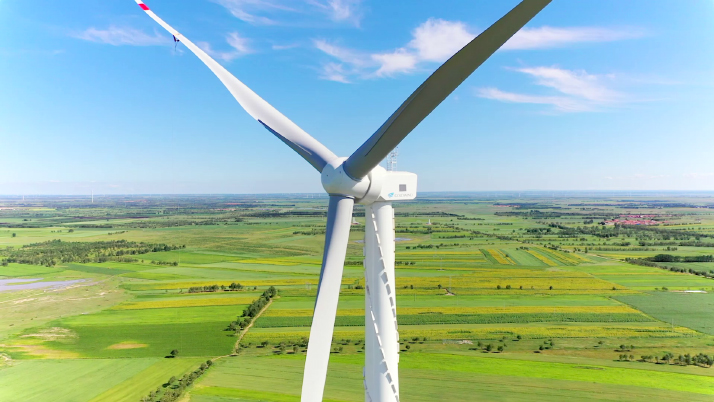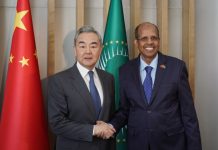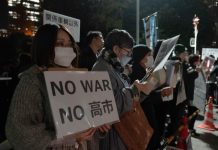BEIJIJNG: The high-speed winds blowing through Xinjiang Uygur Autonomous Region once only whipped up dust and sand from the northwestern Chinese region’s vast expanses of Gobi Desert, affecting local life and production. Today, hundreds of wind turbines transform these gusts into electricity, empowering the region and beyond in a modern green way.
Wu Gang, Chairman of Xinjiang Goldwind Science and Technology Co. Ltd., has witnessed and contributed to this revolution. Wu, an industry veteran, was also a delegate to the 20th Communist Party of China National Congress taking place from October 16 to 22. During the congress, he proposed to further ensure China’s energy security and improve innovation in the wind power industry.
Looking back, Wu can still recall a time when he and his partners would have to master different electricity and machinery techniques all by themselves and go out into the field to conduct wind turbine testing.
The development of Goldwind echoes the growth of China’s wind power industry. Today, the company, with a global installed capacity of more than 89 GW, is China’s largest wind turbine manufacturer and ranks second only to Denmark’s Vestas worldwide.
The company’s products are sold across 38 countries, including many participants of the Belt and Road Initiative, a China-proposed initiative that aims to boost connectivity along and beyond the ancient Silk Road routes.
“China’s wind power industry once failed to keep up with its international peers. But China-built wind turbines have now gone global,” Wu told Beijing Review.
In 1987, Wu quit his job as a college lecturer in Xinjiang and became chief of the Dabancheng Wind Farm located some 50 km from the regional capital of Urumqi. At that time, the wind farm was merely a field for testing new technologies as China’s wind energy industry had only just started to take shape.
In the 1980s, the country was not yet able to carry out large-scale wind turbine installation. China built its first wind farm in 1986 by importing turbines from Denmark to address problems stemming from limited power resources. The industry was trapped by a lack of self-developed technologies. “Back then, we could only execute such a project through international cooperation,” Wu explained.
According to Wu, their major undertaking was to ensure the sound operation of all facilities, while harsh winds, sometimes blowing at a speed of 10 on the Beaufort wind scale—meaning a storm or whole gale, would affect the operation of turbines. All wind turbines have a maximum wind speed above which they cannot operate, this is called the turbine’s “furling speed.” If the wind speed exceeds the furling speed (for example in a storm), the turbine must be shut down to prevent the blades from getting damaged. When faced with turbines breaking down, Wu and his team often felt at a loss.
–The Daily Mail-Beijing review news exchange item





